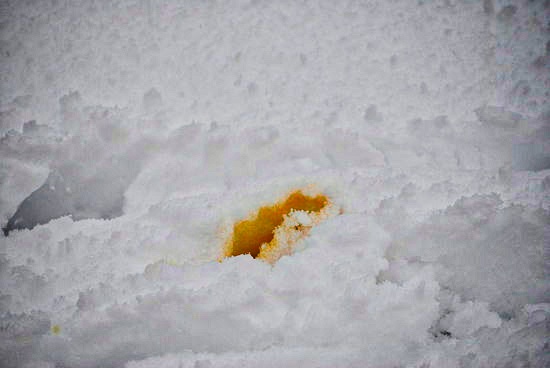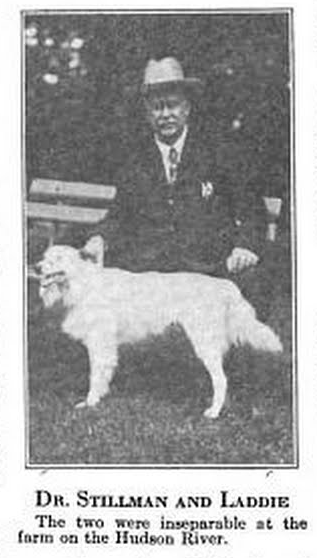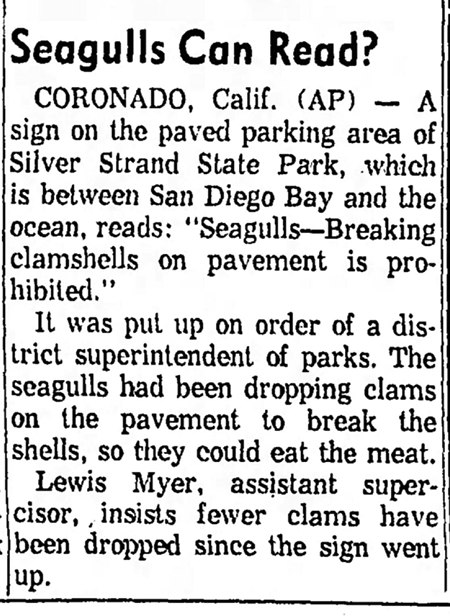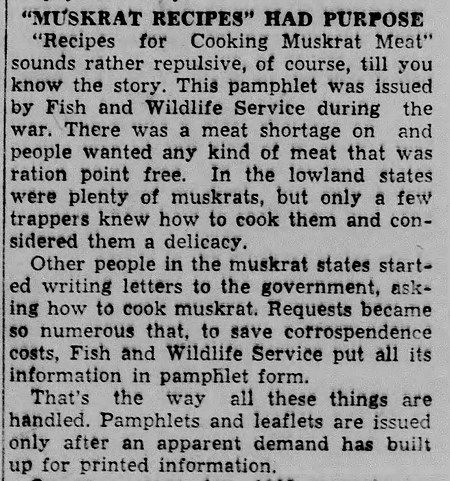Animals
Naked Chicken Research
1976: Drs. William Johnson and Robert Truax of Louisiana State University raised and studied featherless chickens."I guess 'embarrassed' is as good a word for it as any. You put one of them in with a flock of normal birds, and it huddles off in a corner by itself. The other birds won't have anything to do with it until they get used to it," he said.
"And then they're just not as active sexually. They will court and strut much more than the normal bird, but they don't mate as readily."
The story reminds me of the old urban legend about KFC raising mutant, featherless chickens. Maybe this is where the story started.

Argus Leader - Aug 31, 1976

Salisbury Daily Times - Aug 31, 1976
Posted By: Alex - Fri Sep 29, 2017 -
Comments (4)
Category: Animals, Science, Psychology, 1970s
Follies of the Madmen #326

1) Sturgeons are the ONLY ones to make caviar, therefore they are best by default, and the point is moot.
2) The mental juxtaposition engendered by this ad between a fishy taste and the taste of coffee is most unpleasant.
Posted By: Paul - Wed Sep 20, 2017 -
Comments (4)
Category: Animals, Business, Advertising, Products, Food, 1940s
Lion Cage Weddings
The recurring theme of people who get married in a lions' cage.1930s — no exact date or location specified

Lion-tamer George J. Keller weds Ginny Lowry in Cleveland, Ohio
Minneapolis Star Tribune - Mar 10, 1957

Lion-tamer Jimmy Bells weds trapeze artist Experanza Esqueda Gonzales
Torreon, Mexico - July 18, 1967

Lion-tamer Julius Von Uhl and his assistant of six years Linda Pritchard wed in Warren, Michigan
Fremont News-Messenger - Aug 15 1987
Posted By: Alex - Sun Sep 03, 2017 -
Comments (3)
Category: Animals, Weddings, Love & Romance
Yellow Snow Experiment
An experiment conducted by animal behavior expert Marc Bekoff of the University of Colorado, Boulder with his dog, Jethro:More info: Psychology Today - June 29, 2009

Posted By: Alex - Sat Aug 19, 2017 -
Comments (0)
Category: Animals, Experiments, Body Fluids
Manatee Alerting Device
Edmund Gerstein claims to have invented a "Manatee Alerting Device" (aka MAD) that, when attached beneath a boat, will emit a beam of sound alerting manatees to get out of the way. But it's controversial. Other researchers insist the device will just add more noise to an already noisy underwater environment. It would be like "putting a siren on every car on a highway." And that manatees wouldn't be able to tell where the sound is coming from.Complicating the controversy, it turns out Gerstein has a history of advancing unorthodox manatee theories. Back in the 1990s he claimed to have discovered that manatees can hear high-speed boats better than low-speed ones. His claim was promoted by boaters who wanted no speed regulations, but after paying tens of thousands of dollars on extra manatee research, the state of Florida decided Gerstein was wrong. He was also busted for faking a degree. Which is why researchers aren't exactly welcoming him with open arms now.
More info: tbo.com

"Demonstration of an acoustic warning system to alert manatees" [pdf]
Posted By: Alex - Fri Aug 18, 2017 -
Comments (2)
Category: Animals, Inventions
The William Stillman Award

Dr. William O. Stillman (1856-1924) was an early advocate of humane treatment to animals. He created "Be Kind to Animals" week in 1915.

Find an obituary and tributes here.
His name is also connected to an award which, oddly, can go to either animals or humans.
Here, the award is given to a brave dog who helped humans.

Source of article.
And again.

A pig won in 1984.
A cat won the award in 1997, the latest date I can find for the presentation.
Finally we see the award given to a brave human who helped an animal!


I like that any species of creature is eligible for the award.
However, the point might be moot, since I can find no evidence that the award is still given nowadays.
Posted By: Paul - Tue Aug 15, 2017 -
Comments (2)
Category: Animals, Contests, Races and Other Competitions, Twentieth Century
Follies of the Madmen #320

Sexy Owl Lady is recruiting cigar smokers.
Original ad here.
Posted By: Paul - Wed Jul 12, 2017 -
Comments (1)
Category: Animals, Business, Advertising, Products, Tobacco and Smoking, 1960s
Evidence that birds can read

Professor Katsufumi Sato thinks the signs work because people see the signs then look up into the sky for the birds, and when the crows realize they're being observed they fly away. More info: asahi.com
Or maybe the birds can read. I happen to have had in my files an example from 1960 of seagulls in San Diego who obeyed signs ordering them to stop dropping clams on the pavement.

The Lock Haven Express - Apr 7, 1960
Posted By: Alex - Sat Jun 24, 2017 -
Comments (0)
Category: Animals
Follies of the Madmen #318

I don't get it. Is "nimble as an ox" good or bad, the before or after status of fueling up with their gas?
Original ad here.
Posted By: Paul - Tue Jun 20, 2017 -
Comments (4)
Category: Animals, Business, Advertising, Products, 1950s, Cars
Recipes for Cooking Muskrat
How the U.S. Fish and Wildlife Service came to publish a muskrat meat cookbook:
The Escanaba Daily Press - Mar 22, 1949
The recipes include Wine-fried Muskrat, Muskrat a la Terrapin, Maryland Shredded Muskrat, Muskrat Salad, Muskrat Pie, Pickled Muskrat, and Stewed Muskrat Liver. However, it doesn't include Cream of Muskrat Casserole, a delicacy that we posted about back in 2013.
You can read or download the full booklet at archive.org.



A muskrat - via wikipedia
Posted By: Alex - Thu Jun 15, 2017 -
Comments (4)
Category: Animals, Food, Cookbooks

| Who We Are |
|---|
| Alex Boese Alex is the creator and curator of the Museum of Hoaxes. He's also the author of various weird, non-fiction, science-themed books such as Elephants on Acid and Psychedelic Apes. Paul Di Filippo Paul has been paid to put weird ideas into fictional form for over thirty years, in his career as a noted science fiction writer. He has recently begun blogging on many curious topics with three fellow writers at The Inferior 4+1. Contact Us |




